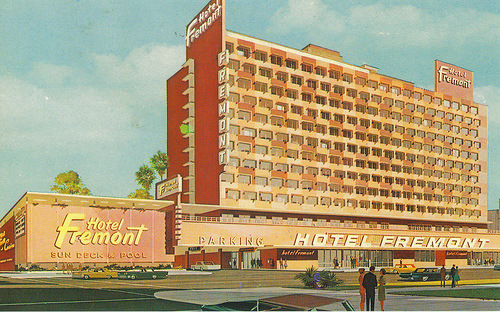 Fremont Hotel rendering by Wayne McAllister. At the time the tallest building in Nevada.
Fremont Hotel rendering by Wayne McAllister. At the time the tallest building in Nevada.
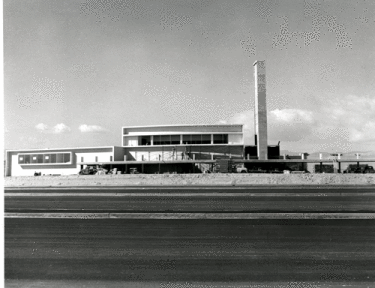 Original facade of the Hacienda Hotel
Original facade of the Hacienda Hotel
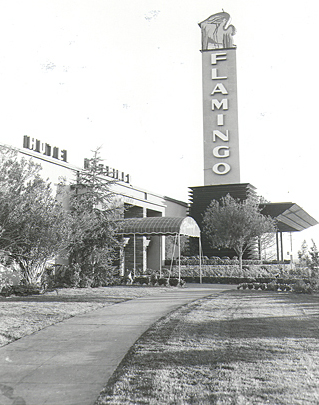 The original facade of the Flamingo Hotel
The original facade of the Flamingo Hotel
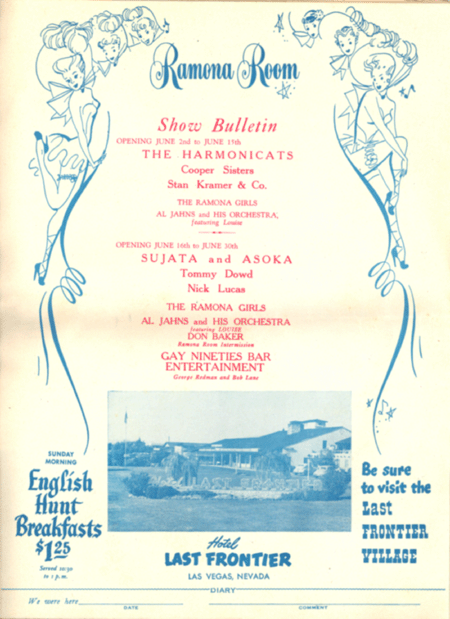
Join us as we separate myth from fact, share stories of the men and women who helped build the town and celebrate one of the most fabulous cities ever built!
 Fremont Hotel rendering by Wayne McAllister. At the time the tallest building in Nevada.
Fremont Hotel rendering by Wayne McAllister. At the time the tallest building in Nevada.
 Original facade of the Hacienda Hotel
Original facade of the Hacienda Hotel
 The original facade of the Flamingo Hotel
The original facade of the Flamingo Hotel

All around the world, it seems, people are outraged over the tagging of the Fabulous Las Vegas Sign. Let us know what you think!
From the Las Vegas Sun:
Someone used a red Sharpie to scribble a few letters on a sign and the town went nuts. This was not just any sign. This one said, “Welcome to Fabulous Las Vegas.”
Las Vegas Mayor Oscar Goodman, whose city does not technically include the sign and who has previously called for cutting off the thumbs of vandals, demanded decapitation.
The reader comments on the Sun’s Web site seethed with anger. Some blamed hippies. Others, the media. There were calls embracing Mayor Goodman’s earlier, more moderate call for merely cutting off vandals’ thumbs. One commenter called for flogging, another caning. Multiple people said the mob would never have allowed this. Still others called for the all-seeing eye of Big Brother.
“I am tired of the vandalism, hit & run accidents, and crime that goes on here,” a commenter with the moniker “henderson” wrote. “I want surveillance cameras everywhere catching criminals. These people do not deserve the ‘privacy’ to commit criminal acts.”
What is it about this sign? After all, graffiti is fairly common and almost nobody likes it, but it rarely inspires calls for blood-drenched vengeance or state surveillance. And this is Las Vegas. We’re not exactly known for civic pride, community involvement, public spiritedness, sentimentality or even waving at our neighbors. And yet it seems there is one enormous exception.
What is it about this sign?
The sign was created in 1959 by Betty Willis, a designer at Western Neon. The star-topped diamond, lit up with atomic-age glitz, was erected to welcome Southern Californians driving in on Highway 91, with the seven letters of “welcome” spelled out in seven silver dollars, a nod to the state’s silver mining legacy and the slot machines we hoped the tourists would play.
“I remember coming here with my family in the 1960s and driving past that sign. It was like, ‘Wow. Here we are,’ ” says Dorothy Wright, a program administrator for Clark County’s Parks and Recreation Department who led the successful drive to have the sign listed in the National Register of Historic Places.
The sign is one of the world’s most recognizable icons, appearing in ads and on T-shirts, coffee mugs, desktop replicas and even snow globes. Even though it’s not on the route into town anymore, thousands of tourists pose in front of it every year. Before the county put in a $400,000 parking lot last year, people daily risked injury or death to run across Las Vegas Boulevard to be seen with the sign.
Yet for all of the millions of visitors, the sign seems to have gone 50 years without any serious vandalism. Until last weekend.
“In that sense, it’s a violation of a sacred icon,” says Patrick Gaffey, a cultural program supervisor for Clark County who oversees public art.
If anything, it’s more an icon for locals than for tourists. Because while nearly everything in town has been torn down, blown up and rebuilt in the past 50 years, the sign has not. In a city of change, the sign has permanence. More than that, unlike the casinos that rise and fall, the sign is a civic object. Among all its charms, its biggest may be as simple as this: It’s ours.
And it’s ours in a very peculiar way. Unlike the Hollywood sign, which stands for an industry and glamour, or the Golden Gate Bridge, which stands for a feat of tremendous engineering, or the Statue of Liberty, which stands for freedom, the Fabulous Las Vegas sign stands for tourism, plain and simple.
That doesn’t diminish the sign. In this town, there is nothing more important that the sign could stand for.
“It means so much to everyone. The inter-connectedness between tourism and the rest of the city is so much more profound here than in almost any other city in the world,” says Alan Feldman, senior vice president of public affairs at MGM Mirage.
It’s one of the first things you notice when you move here: People talk about tourism. Not in a can-you-believe-the-traffic, can-you-believe-their-clothes kind of way, either. We talk about occupancy rates, room prices and the monthly gaming take. We’re interested because if the tourism machine throws a cog, we’re the ones who bleed.
The Fabulous Las Vegas sign is our representative on the Strip. It’s us, welcoming the tourists in, telling them to have fun, enjoy the bright lights and leave their money when they’re done. Please.
So, to have the sign defaced now, when the tourists aren’t spending and we’re hurting? It’s like being kicked when we’re down.
To get some perspective on this, we tried to get in touch with Betty Willis herself, through her daughter Marjorie Holland. It turns out, Holland had talked to her mother about the assault on the sign.
“I told her this morning, when it was on the news, and she said, ‘What’s this world coming to?’ ”
The graffitti was removed from the sign yesterday (Tuesday) by its owner, Young Electric Sign Company.
It cost about $500 to return the sign to its sparkling facade.
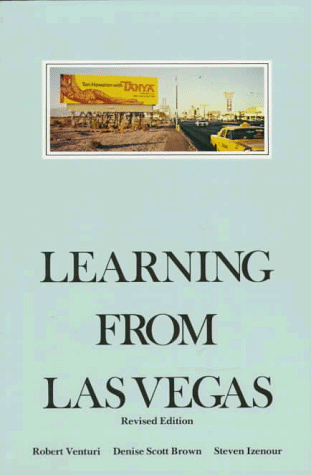
It is one of the iconic books about Las Vegas architecture, "Learning from Las Vegas". Written over forty years ago, this influential book, along with Alan Hess', "Viva Las Vegas: After-Hours Architecture", influences the way we look at the architecture of the Classic Las Vegas Strip.
Recently, Denise Scott Brown and Robert Venturi returned to Las Vegas to see how the landscape had changed in forty years. Their partner, Steven Izenour, passed away some time back.
From our pal Kristen Petersen at the Las Vegas Sun:
It’s 100 degrees. Everyone is sweating.
Architects Denise Scott Brown and Robert Venturi tour the Neon Boneyard, followed by a small crowd, some shaded by umbrellas. Cameras roll.
The Boneyard visit and a subsequent architectural bus tour are for a documentary on the architects whose famous 1968 study of Las Vegas launched an influential way of architectural thinking by observing what the people want, rather than what the architect dictates.
The project, begun five years ago by their son, Jim Venturi, delves into their working relationship, transformative years, observations, influences, ideas and projects, and has taken them around the world.
The Las Vegas stop is key. “Learning from Las Vegas,” a book of their study of the city as a prototype for 20th century American suburbia, became a formula for how they approached, and still approach, architecture.
Jim Venturi calls it a bedrock of his parents’ career, “the defining element that they are associated with by their willingness to look at things other people weren’t looking at.”
That the book remains topical in college curricula and contemporary conversation, even outside of architecture, is partly what inspired him.
“People had discovered their thinking and applied it outside the field,” he says. “Today you’ll find all kinds of interesting schools that are using ‘Learning from Las Vegas’ in the curriculum.”
Scott Brown, 77, and Venturi, 84, have received their share of criticism for their writings and designs — though they have their disciples and Venturi won the 1991 Pritzker Prize.
The film, Jim Venturi says, explains some of that: “You see the world from their perspective. You see their challenges. You learn about the experiences that shaped them.”
That, he says, includes their application of Eastern ideas and quest for balance.
John Halpern, known for his 1979 documentary on German artist Joseph Beuys, directs the film, one he says he would have given anything to be a part of: “Our main characters are amazing and complex.”
Halpern recalls Robert Venturi describing Palladio’s Basilica di San Giorgio Maggiore: “He revealed part of his mind, his mental process, his natural instinct for seeing art in its deeper meaning and esoteric impact. His sincerity, openness to and love of art and architecture moved me completely.”
Halpern describes Scott Brown as a powerful woman and architect, denied credibility in the “men’s club” of architecture. He’s also seen her open up:
“While describing her feelings and visionary ideas about architecture and the intricacies of city planning, (she) revealed a beautiful correlation between her body and sensorial experience in her art expression.”
Scott Brown says the project has been hard work, but has given them their lives back by revisiting the places where they shaped their ideas and careers.
Have they visited Vegas much?
“We have,” she says. “But who’s to know, this could be our last. But we say that everywhere.”


We've got copies!
Discover the real history of Las Vegas!
This is the book I wrote on the history of Las Vegas with lots of postcards, some rare and one of kind. Makes for great reading this summer!!
If you are flying to Vegas this summer or need a book to read while poolside, this is it. The story of Las Vegas told through postcard images. Images that are part of our collective memory, images that you may never have seen before, a look at Las Vegas beyond the neon and the glitter.
In short, the real history of Las Vegas as you've never experienced.
The book covers the history of Las Vegas from 1905 to 1965 and besides lots of interesting history about the Strip and the various original hotels, there's lots of history on the Roadside Architecture, the Motels, the Post-War era,and most of all, the Community.
Discover the real history of your favorite vacation spot or the place you call home!
It's a fun-filled book packed with info and lots of images of the Las Vegas you love and miss.
I've got copies of the book for sale and I'll autograph them as well!
http://www.classiclasvegas.com/coolstuff/coolstuff.htm
So, head on over and order your copy today!
A portion of the sales goes toward maintaining this blog and our historical preservation work so it's for a worthy cause!